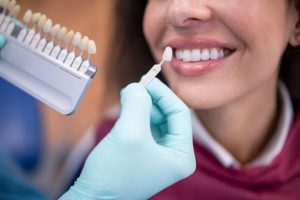What Does a Thorough Pet Exam Involve?

Have you ever wondered what happens during a thorough pet exam? If you’re a pet owner, you’ve likely taken your furry friend to the vet at least once. But have you ever thought about what makes a thorough pet exam so essential? Let’s look into what your vet looks for during these crucial check-ups.
1. Initial Assessment
The first part of any thorough pet exam is the initial assessment. This starts even before your vet touches your pet. They observe how your pet moves, how they act, and any signs of discomfort. This “big picture” look is important as it can alert the vet to underlying issues that might not be apparent in a hands-on examination.
Behavioral Assessment
-
How does your pet react to their surroundings?
-
Are they nervous or unusually lethargic?
-
Do they move fluidly, or is there stiffness in their gait?
Physical Appearance
-
Is their coat shiny and well-groomed?
-
Are they maintaining a healthy weight?
2. Vital Signs Check
Once the initial assessment is done, the vet moves on to checking vital signs.
-
Temperature: Most pets’ temperatures should be between 101 and 102.5 °F.
-
Pulse: Depending on your pet’s size and age, a healthy pulse rate can vary.
-
Respiration: Your vet will check for a steady, normal breathing pattern.
3. Head-to-Tail Examination
This part involves a detailed check-up from the head all the way to the tail. Each area is carefully examined for any signs of abnormality or concern.
Eyes and Ears
-
Are the eyes clear and free of discharge?
-
Are the ears clean, or do they have a buildup of wax or signs of infection?
Mouth and Teeth
Dental health is just as important for pets as it is for humans. The vet will check for plaque buildup, gum health, and any signs of periodontal disease. For those looking for comprehensive vet dentistry in Grand Prairie, TX, ensure your vet performs a thorough dental check during each exam.
-
Are there broken or missing teeth?
-
Is there any bad breath indicating possible dental issues?
Skin and Coat
The skin and coat are great indicators of overall health. The vet will check for the following:
-
Dandruff or dry patches.
-
Signs of parasites such as fleas or ticks.
-
Any unusual lumps or bumps.
Heart and Lungs
A stethoscope will be used to listen to your pet’s heart and lungs to ensure there are no abnormal sounds, such as irregular heartbeats or respiratory issues.
Abdomen
The vet will gently feel the abdomen for any signs of pain, swelling, or unusual lumps.
4. Lab Tests
Lab tests are essential for diagnosing issues that aren’t visible during the physical exam.
-
Blood Tests: These are used to check for any internal issues like liver or kidney function, blood sugar levels, and more.
-
Urinalysis: This can give clues about your pet’s urinary health, bladder and kidney function.
Visiting a vet lab in Grand Prairie, TX, can help ensure that your pet gets the best diagnostic care possible, especially if your local vet clinic has partnered with specialized labs for accurate results.
Specialty Exams
Depending on your pet’s age, breed, and medical history, special tests may be required. These include:
-
Radiographs (X-rays): These are useful for checking bones and organs and for checking for internal issues.
-
Ultrasounds: Great for examining soft tissues and organs.
-
Endoscopy: Used for internal visual inspection and biopsies.
5. Vaccinations and Preventive Care
No exam is complete without discussing preventive care, especially vaccinations. Vets assess which vaccines are due and discuss any changes to vaccination schedules.
-
Are there any vaccination updates required?
-
Do you need advice on parasite control or dietary recommendations?
Many vet clinics emphasize the importance of getting their pet vaccination services regularly updated to ensure your pet remains in optimal health.
6. Client Education
The final part of a thorough pet exam is educating pet owners. Vets discuss any findings, provide advice on lifestyle changes, and recommend treatment plans if necessary.
-
Understanding your pet’s needs better.
-
Knowing what to monitor at home for early signs of health issues.
-
Advice on nutrition, exercise, and grooming.
7. Follow-ups and Continuous Care
No matter how healthy your pet appears, regular follow-up exams are crucial. They help monitor any previously detected health concerns and ensure ongoing preventive care measures are effective.
-
How often should follow-up exams be scheduled?
-
What signs should prompt an immediate vet visit?
Maintaining a good relationship with your vet ensures your pet receives continuous, high-quality care tailored specifically to their needs.
Final Thoughts
A thorough pet exam is a multi-faceted process designed to keep your furry friend in top condition. From the initial assessment to lab tests and vaccinations, each step is crucial in ensuring your pet’s health and well-being. Make sure you prioritize regular vet visits to catch any potential issues early and provide the best possible care for your beloved pet.






